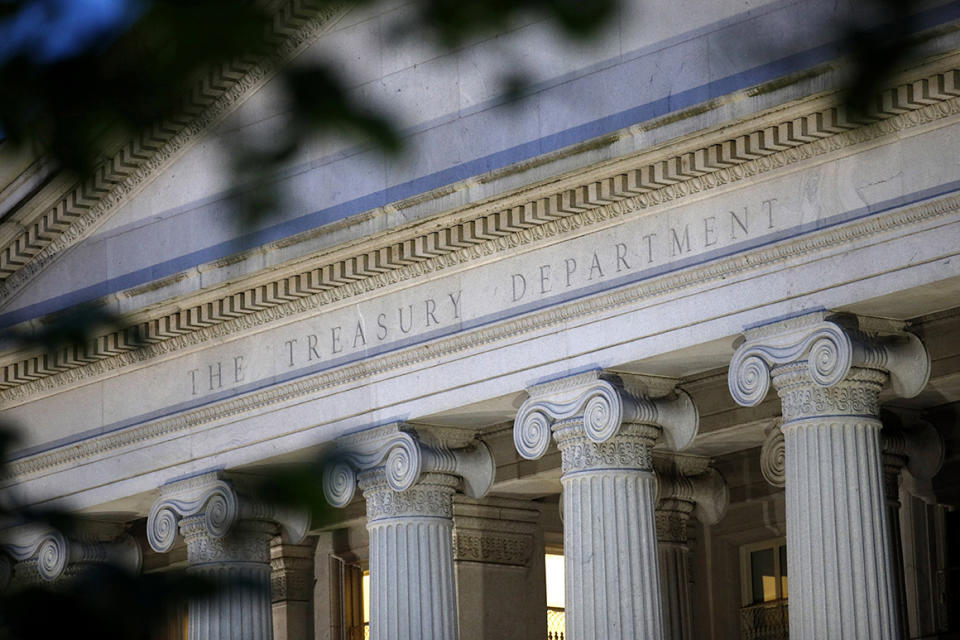Small business loan effort might be less generous than advertised
An emergency loan program meant to aid small businesses hurt by the coronavirus pandemic could be a lot less generous than previously advertised.
The Economic Injury Disaster Loan program is supposed to provide small businesses running out of cash due to the pandemic “with working capital loans of up to $2 million,” according to the Small Business Administration’s website.
But small businesses don’t appear to be able to get anything close to $2 million. Those that apply “will likely be given maximum loans of $25,000-$35,000 (as opposed to the advertised $2 million cap for EIDLs),” Tom Sullivan, the U.S. Chamber of Commerce’s vice president for small business policy, wrote in an internal email on Thursday evening, which was obtained by POLITICO.
Demand for the loans has been so high that it has overwhelmed the agency, even though Congress set aside billions of dollars last month to help the program make loans and grants to small businesses hurt by the novel coronavirus. It's the latest headache for small businesses trying to tap into the hundreds of billions of dollars in aid Congress appropriated last month, much of which hasn't made its way to small businesses yet.
“I do not understand SBA’s decision to have a quiet rollout instead of admitting publicly that their disaster loan program is tapped out and Congress needs to grant them more,” Sullivan wrote in the email, which he sent to other Chamber officials.
The email lines up with what the agency appears to have told small business owners who applied for the loans.
“The SBA is experiencing a large volume of applications for the Economic Injury Disaster Loan,” the agency wrote to one loan applicant in a message shared with The New York Times. “Due to current appropriations for this program, the SBA will make initial loan disbursements for two months of working capital up to a maximum of $15,000 per applicant.”
In remarks on the Senate floor on Thursday, Sen. Ben Cardin (D-Md.) also said the loan program was “only able to provide $15,000” to small businesses that applied, even though the average amount requested was $200,000.
Small businesses have applied for $372 billion worth of Economic Injury Disaster Loans, according to Cardin. “But here’s the problem: We have only authorized $7.3 billion for that program,” he said.
Cardin has called for providing the program with enough money to make another $300 billion worth of loans.
Small businesses that apply for the loans can also get a cash advance of up to $10,000 — making the total amount available around $25,000, the figure cited in Sullivan's email. But that effort is also underfunded and doesn’t have enough money to give $10,000 to every small business that has applied, Cardin said.
Sullivan confirmed he sent the email, which he said was meant to ensure the Chamber gave accurate information to state and local chambers of commerce trying to guide small businesses through the loan application process. “We are going full speed at trying to get information into the hands of small businesses,” he said.
The Small Business Administration disputed that loans would be capped at $25,000 to $35,000. Jennifer Kelly, a spokeswoman for the agency, wrote in an email to POLITICO that it was “not accurate” but declined to elaborate.
The Economic Injury Disaster Loan program is one of two initiatives designed to help small businesses suffering due to the pandemic. A second, larger effort, known as the Paycheck Protection Program, offers loans up to $10 million but stipulates that 75 percent of the money must be used to cover payroll.
Banks complained to President Donald Trump this week that the Small Business Adminisration’s system used to authorize the Paycheck Protection Program loans has crashed periodically since it launched last week and the some community banks still lacked access to it.
The Treasury Department has asked Congress to cough up another $250 billion to shore up the Paycheck Protection Program, which lobbyists for restaurants, hotels, retailers and other industries devastated by the pandemic say can’t come soon enough. Industry lobbyists have also called for more money to bolster Economic Injury Disaster Loans.

“What we’re finding is that while the intent of these programs is good, the funding is not enough for the nation’s second largest private employer,” Sean Kennedy, the National Restaurant Association’s top lobbyist, said in a statement. “We hope that Congress will move quickly to increase the funding for the PPP, consider additional funding for the EDIL, and will work with us to create a Restaurant Recovery Fund to ensure the survival of the industry.”
Tori Barnes, the U.S. Travel Association’s top lobbyist, said in an interview that the Paycheck Protection Program could run out of money as soon as next week. She also called for more money to shore up the Economic Injury Disaster Loans, which she said wouldn’t help small businesses much if they’re capped at $25,000.
“It essentially makes the EIDL loan useless,” she said.
Some travel industry groups can only seek Economic Injury Disaster Loans because they’re not eligible for Paycheck Protection Program loans, she said, including tourism promotion agencies such as Visit Philadelphia and Visit Tampa Bay.
“There are organizations that are going to be critical to the recovering when we get to that point,” she said.

